By Brandi Thring
Wildfire researcher Alexis Stowards (BNRS Hons ’24) spent nearly a decade fighting wildfires, witnessing firsthand the immense power of fire and its role in shaping landscapes.
Drawn by the excitement, camaraderie and her love for the outdoors, Stowards’ journey began in Williams Lake, B.C., at the age of 17 when she became a junior firefighter. Over time, quenching fires on the frontlines led to a greater thirst for understanding of the role fire plays in our ecosystems. Her experiences, particularly during the 2017 wildfire season, inspired her pursuit of a degree in natural resource science at TRU.
“Response holds such an important piece of the fire pie, but it is a slice, not the full picture,” says Stowards. “Furthering my education is a way to fill in the missing pieces.”
For her honours thesis, she conducted a fire history study in the Nemiah Valley, part of the Tŝilhqot’in Nation’s title lands. This untouched landscape, steeped in Indigenous history, provided a rare opportunity to uncover centuries of fire stewardship.
“I was able to get a really cool fire history dating back to the early 1700s,” says Stowards, adding that when shown tree samples, Tŝilhqot’in community members were able to point out significant moments in history, such as the Chilcotin War and a smallpox epidemic.

Alexis Stowards’ grandparents Marg and George Colgate in front of their home in the Nemiah Valley, which their granddaughter is now living in with her husband, Jeremy.
Trees are a natural history
“Getting intimate with how historically fire maintained that landscape is really important to help us decide how to adjust in the future with climate change and with reintroducing fire to the land. It’s like a history book, but in the trees,” she says.
Now a graduate student in natural resource science, Stowards works under TRU’s Dr. Jill Harvey, Canada Research Chair in Fire Ecology, delving into the relationship between fire and Shepardia canadensis (soapberry), a culturally significant plant in the Tŝilhqot’in Nation, where she lives, works and conducts her research.
She aims to understand how fire influences its growth, regeneration and nutritional properties. The project involves innovative fire practices, trading modern tools like drip torches for traditional methods that preserve the plant’s integrity. Fire will be carefully reintroduced to test how varying intensities impact soapberry regeneration.
Whether exposure to fire make the berries sweeter, larger or more nutritious remains to be seen, but Stowards’ research is more than academic — it is a journey of rediscovery, aiming to reintroduce safe, culturally appropriate fire management practices and honour the traditional stewardship of Indigenous lands.
“We have to acknowledge that there were ways of stewarding the land well before we settled here and those practices need to be brought back. Our ancestors coexisted with fire — it’s vital for ecosystems, from pollinators to large mammals.”
She says TRU is leading the way in recognizing the importance of integrating Indigenous knowledge and modern science and setting a precedent for fire research in Canada. By bringing researchers together with Indigenous people, different levels of government and members of the public, experts from TRU Wildfire will be able to provide recommendations that will propel the next 100 years of fire research.
“Preparing to coexist with fire will define the next generation’s work,” says Stowards.
Guided by love of the land
Beyond her academic and professional pursuits, Stowards has a deep personal connection to the land. Her family’s legacy lies in the Nemiah Valley, where her grandparents were welcomed by the Tŝilhqot’in people in the 1970s, raising their children and working there for many years. The area, rich with history and untouched beauty, serves as both home and inspiration.
“I have travelled to many places and everywhere I went, I would always internally measure it against Nemiah Valley,” she says, adding that no matter the place, nothing quite measures up to its splendour.
Her love for the valley is shared by her husband Jeremy, who works as a trail builder and hand faller. Several years ago, the couple began manifesting a way to make Nemiah Valley their home permanently. With Stowards’ grandparents contemplating a change, they were on board to offer their property to the young couple under one condition: they had to find jobs that would allow them to live there.
“So, I put it out to the universe — if there’s a job available, I would take it and then we’d see if we could actually make it work,” she says.
Reconnecting with fire practices
Stowards is now the Tin Towh (woods) co-ordinator with Xeni Gwet’in First Nation, which is a community within the Tŝilhqot’in Nation. Her work is intimately tied with her master’s degree work, and she is building her research based on the direction the community wants to go. Through world cafés and discussions with Elders, youth and local leaders, she closely aligns her research with community needs.
“This work not only benefits ecosystems, but helps communities reconnect with fire practices that were suppressed under colonial policies,” she says. “It’s about listening and letting their vision guide the work.”
Her efforts also extend to public education, advocating for prescribed burns and cultural fire practices as tools for wildfire prevention and land restoration.
“I hope communities can practice cultural burning safely and proudly, with broader societal support,” she says. “British Columbians must embrace these practices as part of our collective future.”
Learn more about TRU Wildfire and the Centre for Wildfire Research, Education, Training and Innovation at tru.ca/wildfire.

